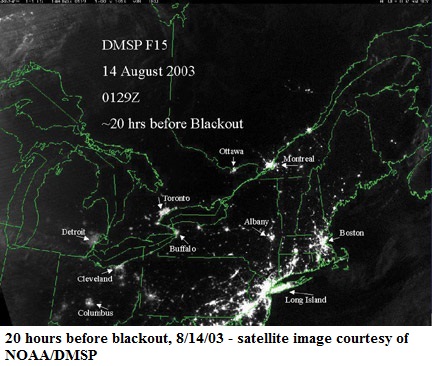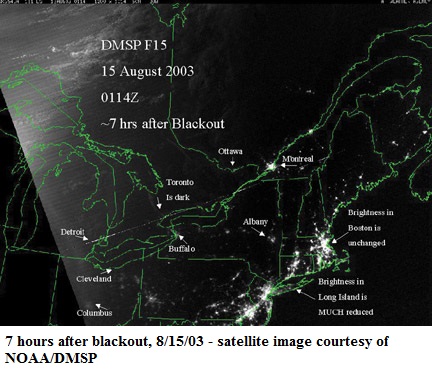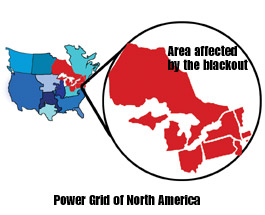Modernizing America’s Electric System
Where were you on August 14, 2003? If you live somewhere other than the Northeast or Midwest, the date of North America’s largest blackout may not be familiar to you. I was working on my home computer, while my spouse was engrossed in vacuuming our cars. When everything came to a flickering halt, I immediately blamed him for overloading our touchy circuit breakers. It soon dawned on us that something drastic had occurred. From our car radio, we heard reports of power outages in major cities across the U.S. and Canada. Confusion set in, not to mention a bit of panic. Could terrorists have coordinated this massive blackout? Fortunately, not this time.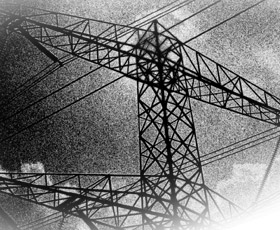
In the weeks and months that followed, causes were determined and many recommendations set forth. Where are we one year later and what opportunity does this represent for our country’s technical elite, including engineers and systems integrators? Good news on both fronts. Many plans and visions are in place and – better yet – opportunity abounds for those who get to know the grid.
Grid 101
America’s electric system (aka “the grid”) has been hailed as “the supreme engineering achievement of the 20th century” by The National Academy of Sciences. According to the U.S. Department of Energy (DOE) and its new Office of Electric Transmission and Distribution (OETD), each day more than 10,000 power plants deliver electricity over 157,000 miles of high-voltage electric transmission lines to 131 million customers. The U.S. spends $247 billion on electricity each year and the grid’s total asset value is estimated at $800 billion.
According to industry experts, including OETD, the grid is “reaching the limit of its ability to meet the nation’s electricity needs.” While the country is moving quickly into the digital information age – increasing its need for reliable electricity – the electro-mechanical grid is aging. The existing infrastructure of wires, transformers, substations and switchyards has been in place for 25 years or more. According to OETD, a number of factors are impacting grid performance, including aging equipment, transmission bottlenecks, deregulation, and regulatory change. These factors have combined to discourage private sector investment in grid upgrade, especially regarding new transmission and distribution technologies.
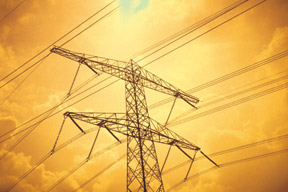 Why is it so difficult to reliably operate the grid? First, electricity flows at nearly the speed of light and is not able to be stored in large quantities, economically speaking. It must be produced the moment it is used. Second, without expensive control devices, AC current flow can’t be regulated like a liquid or gas. So, it flows freely on all available paths according to the laws of physics. These two factors make reliability a complex challenge.
Why is it so difficult to reliably operate the grid? First, electricity flows at nearly the speed of light and is not able to be stored in large quantities, economically speaking. It must be produced the moment it is used. Second, without expensive control devices, AC current flow can’t be regulated like a liquid or gas. So, it flows freely on all available paths according to the laws of physics. These two factors make reliability a complex challenge.
In order to ensure reliability, NERC (North American Electric Reliability Council) and its 10 regional reliability councils focus on standards that address seven main areas: balance power generation and demand continuously; balance reactive power supply and demand to maintain scheduled voltages; monitor flows over transmission lines and other facilities to ensure that that thermal limits are not exceeded; keep the system in a stable condition; operate the system so that it remains in a reliable condition even if a contingency occurs; plan, design, and maintain the system to operate reliably; and prepare for emergencies.
August 14 Revisited
What happened on August 14, 2003, to cause the widespread power outage? To find answers, President George W. Bush and then-Prime Minister Jean Chrétien established a joint U.S.–Canada Power System Outage Task Force. An interim report was published in November 2003, with a final report issued April 5, 2004. The task force investigated the outage to determine its causes and developed 46 recommendations to minimize the possibility of future outages.
According to the report, the blackout could have been prevented. The outage affected approximately 50 million people and 70,000 megawatts (MW) of electric load in Ohio, Michigan, Pennsylvania, New Jersey, New York, Connecticut, Vermont, Massachusetts, and the Canadian provinces of Ontario and Québec. It started a few minutes after 4 p.m. Eastern Daylight Time and lasted four days in some areas, with a total cost estimated between $4 billion and $10 billion. Key parties included FirstEnergy Corp. (FE), American Electric Power (AEP), and their respective reliability coordinators, Midwest Independent System Operator (MISO), and PJM Interconnection (PJM). Causes of the blackout are grouped into four main areas within the report.
Group 1 is summed up as “inadequate system planning.” This refers to the failure of FE and the East Central Area Reliability Coordination Agreement (ECAR) to assess and understand the shortcomings of FE’s system, especially its voltage instability and the vulnerability of the Cleveland/Akron area. The report concludes, “FE did not operate its system with appropriate voltage criteria.” Group 2 is summed up as “inadequate situational awareness.” FE didn’t recognize or understand the deteriorating condition of its system. Group 3 involved “inadequate tree trimming.” Group 4 centered around “inadequate RC (reliability coordinator) diagnostic support.” This refers to the failure of the interconnected grid’s reliability organizations to provide “effective real-time diagnostic support.”
Specific causes of the cascading blackout fall into one of these four groups.
Grid Progress, Fast Forward One Year
Many of the immediate concerns addressed in the final report have been corrected, a large number of them by FirstEnergy. Mark Durbin, spokesman for FE, says, “We’ve looked at four main areas, including voltage criteria and reactive resources, operational preparedness and action plans, emergency preparedness, and operator training. In addition, we’ve worked closely with technical teams from NERC to ensure we comply with their readiness audits.” Durbin also notes that FE has established procedures and processes to operate more conservatively, installed new computer systems in its Ohio and Pennsylvania control centers, enhanced monitoring capabilities, enhanced operator training, and increased its vegetation management. “We’ve foot-patrolled all 11,000 miles of our high-voltage transmission lines and have cleared any potential problem trees. Easement rights are also being enforced to assure adequate clearances.”
Beyond these immediate issues, NERC is working closely with FERC (Federal Energy Regulatory Commission) on two broad audit areas across the country, according to David Meyer, senior advisor for the Office of Electric Transmission and Distribution (OETD). “NERC and FERC are focusing on compliance audits, which deal with alleged violations, and readiness audits that are forward looking. Between February and June of this year, these two agencies audited 20 of the largest energy-related entities east of the Rockies,” says Meyer. An estimated 50 readiness audits will be completed by the end of 2004.
Meyer also notes that the DOE is working closely with its Canadian counterparts to establish an Electric Reliability Organization (ERO), which hopes to give well-defined direction and oversight to the entire North American transmission network. According to Meyer and other industry and government spokespersons, the most important issue is to make reliability standards mandatory and enforceable, with penalties for noncompliance. The U.S. Congress must enact these reliability provisions to make them stick with industry, something many folks both in and out of government have wanted for years.
“We need legislation,” says Meyer, “but we have other things in place to work with until legislation gets approved. NERC is in the process of restating its reliability standards in a more specific form, making them easier to follow and enforce. Final approval of these new standards is expected in 2005.” Other standards are also in development, according to Meyer. These include national guidelines for vegetation management as well as real-time operating tools that will allow for wide area visualization and give earlier warnings about arising problems.
Grid of the Future
Moving from an aging electro-mechanical grid to a fully automated, electronically controlled system that supplies affordable, clean and efficient energy sounds like a dream. Yet, little by little, with advances in technology and the right people to install it, the grid will slowly morph into its future self. OETD’s vision of the new system, called Grid 2030, “envisions a fully automated power delivery network that monitors and controls every customer and node, ensuring two-way flow of information and electricity between the power plant and the appliance, and all points in between. The grid will use distributed intelligence, broadband communications and automated control systems to enable real-time market transactions and seamless interfaces among people, buildings, industrial plants, generation facilities, and the electric network.”
EPRI (Electric Power Research Institute) shares a similar vision. Its “21st Century Transformation” aims to stabilize electricity markets, provide for the public good, protect the environment, educate and empower consumers, and unleash technical innovation. EPRI sees a “trilemma” of economics, politics, and technology that needs to be synchronized in order for progress to go forward. No one can solve the trilemma alone, according to EPRI, and no simple solution exists.
Further, a joint statement issued July 20 by EPRI and the National Council for Advanced Manufacturing, reports, “Currently, the electricity sector is laboring under an inconsistent and conflicting set of federal and state rules and a highly uncertain regulatory framework. Due to this regulatory ambiguity, most utility companies have limited their investments until the market structure is more clearly understood. Magnifying this lack of investment is the fact that the pressures of cost containment have essentially stifled and deferred needed infrastructure investment for at least two decades.” The statement encourages both the Bush and Kerry presidential campaigns to include modernizing the electricity infrastructure as a top priority.
The technology portion of grid transformation depends on developing innovations that “enable digital control of the power delivery network, integrated electricity and communications for the user, transformation of the meter into a two-way energy/information portal, integration of distributed energy resources into the network, and a robust advanced power generation portfolio, including coal refining,” according to EPRI. How much will it cost? A rough estimate calls for $100 billion in public and private investment over the next 10 years. Benefits are expected to outweigh costs by a 10-1 ratio, says EPRI.
Engineers, Systems Integrators Weigh In
Engineers and systems integrators working in the field have their own views on what’s happening with regard to modernizing the grid. Steve Drouilhet, president and founder of Sustainable Automation LLC, Boulder, CO., designs and manufactures controllers for individual power system components and supervisory controllers for complete distributed power systems, particularly those incorporating wind energy. The company also provides custom control solutions for a variety of industrial manufacturing and process control applications.
Drouilhet says that distributed generation, such as customer-owned wind turbines and natural gas fueled engine generator sets, is already cost-effective in many cases. In addition, distributed generation could make the power grid more robust. “The problem is that many utility companies see distributed generation as a threat, so they require costly interconnection studies and impose exorbitant standby charges, which are unfortunately often approved by public utility regulatory commissions. The result is far fewer distributed power systems than there could be,” he says. Drouilhet adds that the situation varies from state to state, utility to utility.
“Progress is being made in renewable energy, and if the inhibiting factors were removed, results would appear even faster,” he adds. Small victories are indeed taking place. As reported in the August 6 issue of Wind Energy Weekly, The Massachusetts Department of Telecommunications and Energy issued an order approving a settlement with NSTAR Electric that exempts renewable energy facilities from standby charges.
Andy Feimster, a systems integrator at North Fork Electric, Crumpler, N.C., also works in the power and utility industry. He acknowledges the difficulty of working with today’s grid. “The complexity of the system is such that no single human being can truly understand it. It’s grown almost organically,” he says. The effects of deregulation have served to further confuse the situation. Feimster notes, “There are opportunities for integrators to provide systems and services to electric utilities, but it can be very complicated. Utilities are brokering power all over the place, and systems are being interconnected in ways they never have been, ways they were never designed for.”
Feimster believes the evolving grid may offer some opportunities for engineers and systems integrators. He notes that the line between industrial grade equipment and utility grade equipment is beginning to blur. In many cases, he says, the industrial grade has become advanced and reliable enough to be specified into power and utility work. “If these products are suitable for use in chemical plants that have life and death consequences for malfunctions, then surely they are reliable enough for utility applications,” he adds.
Industrial grade components such as Windows-based computers, PLCs, and DCS equipment are serviceable by a wide group of experts and consultants, good news for those hoping to work in the utility market as well as for the utilities who are looking for more reliable and cost effective solutions. Feimster feels that the grid will have to make further moves in the direction of fully automated controls as well. “These systems must become fully automated and remotely monitored. Humans have the capacity to do only so many things at once, not to mention the fact that problems can occur within fractions of a second and originate from hundreds of miles away,” he says.
Opportunity Abounds
Modernizing the grid is going to require huge investments of time, money and technical talent. Engineers and systems integrators will no doubt play an important role in modernization. David Meyer of OETD says, “Technical experts need to do everything they can to find out what’s going on in their geographic region. Regional transmission planning is a critical part of the solution. Regionally, where do we need new capacity? What are the relevant technologies? Getting information from the appropriate RTO (regional transmission organization) is a good first step,” advises Meyer.
Clark Gellings, vice president of power delivery and markets for EPRI, also sees a need for talented engineers. “The number of power engineering graduates continues to decline, as have the number of new engineers being hired and groomed by utilities. Recent events have not yet changed this. In the meantime, corporate cost reductions have often forced the oldest and most knowledgeable engineers out of utilities. We see a real problem looming. Second, regarding the skilled workers or trades, they’re definitely graying and departing with knowledge that cannot be replaced. The current focus here is on knowledge capture, using various means to record undocumented worker knowledge,” says Gellings. All of this bodes well for technical experts. Utilities that have slashed their engineering departments need knowledgeable consultants – such as engineers and systems integrators – to fill the gap.
Another area of opportunity is the need to diversify the grid’s energy supply. FERC, in support of new rules for integrating wind energy into the grid, says, “Encouraging the development of intermittent generation will increase diversity in the resource base, thereby improving system reliability as a whole.” The Union of Concerned Scientists supports this view as well. “A renewable electricity standard requiring utilities to increase their use of renewable electricity from a mere 2 percent today to at least 10 percent by 2020 was one of the few positive provisions in the energy bill recently passed by the Senate,” says the group.
The bottom line? The North American power grid cannot be offshored, as many jobs and factories have been. If engineers and systems integrators do their homework – get familiar with regional planning, emerging technologies, and renewable electricity resources – they may find themselves dancing the Electric Slide all the way to the bank.
Names to Know
DOE – U.S. Department of Energy
www.doe.gov
The DOE’s “Energy Strategic Goal” is to protect our national and economic security by promoting a diverse supply and delivery of reliable, affordable, and environmentally sound energy.
OETD – Office of Electric Transmission and Distribution
OETD is a new DOE program office formed to help ensure a robust and reliable U.S. transmission grid for the 21st century. Its mission is to lead a national effort to help modernize and expand America’s electric delivery system.
FERC – Federal Energy Regulatory Commission
www.ferc.gov
FERC regulates and oversees energy industries in the economic and environmental interest of the American public.
NERC – North American Electric Reliability Council
www.nerc.com
NERC’s mission is to ensure that the bulk electric system in North America is reliable, adequate and secure. Its members include 10 regional reliability councils.
EEI – Edison Electric Institute
www.eei.org
EEI is the premier trade association for U.S. shareholder-owned electric companies.
EIA – U.S. Energy Information Administration
www.eia.doe.gov
EIA is the government’s energy statistical agency. View its report, The Changing Structure of the Electric Power Industry 2000: An Update.
EPRI – Electric Power Research Institute
www.epri.com
EPRI is a nonprofit research consortium for the benefit of utility members, their customers and society.
By Frances Richards
Freelance Writer
Originally Published: Sept. 1, 2004


